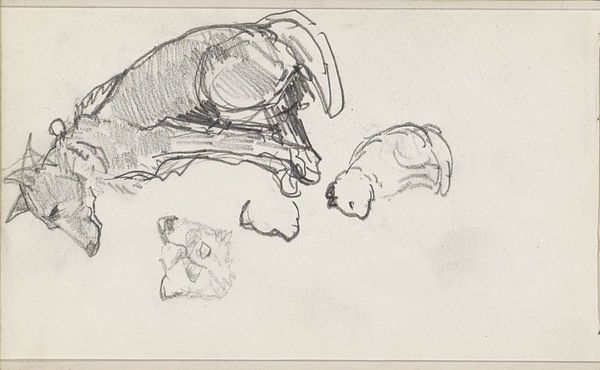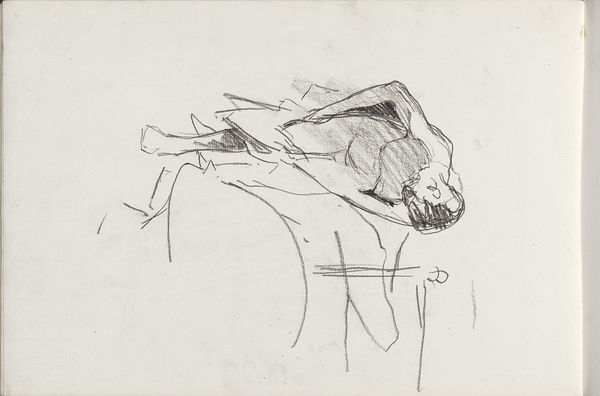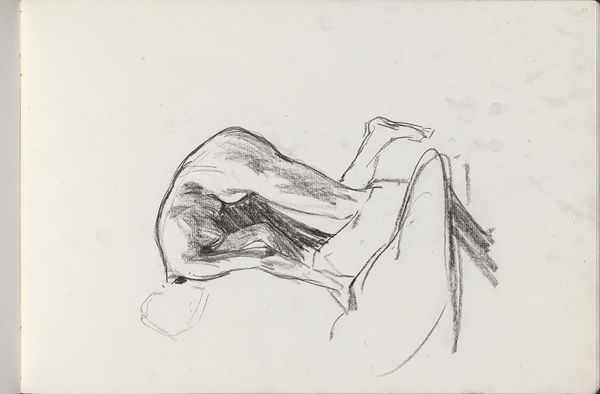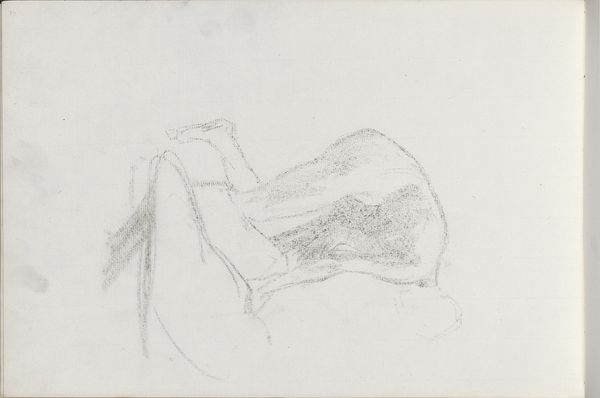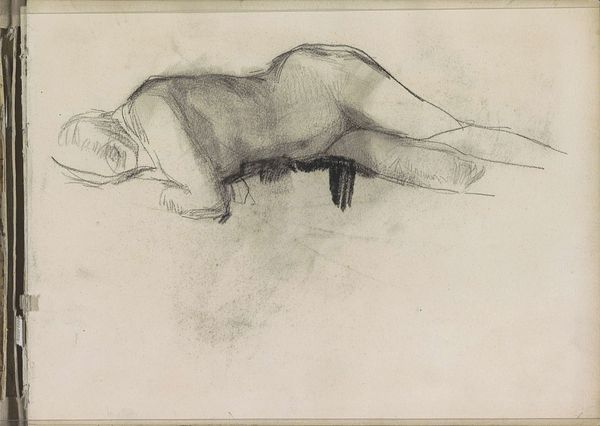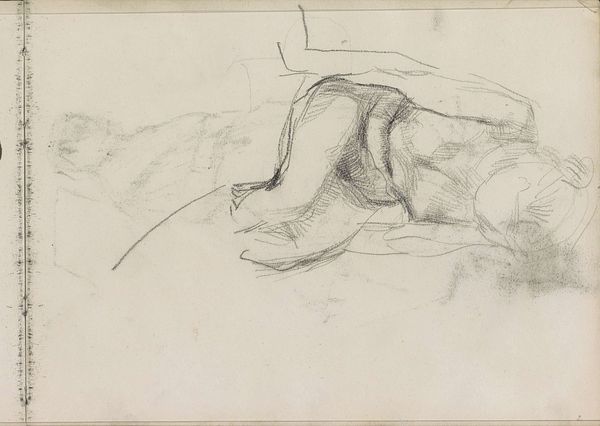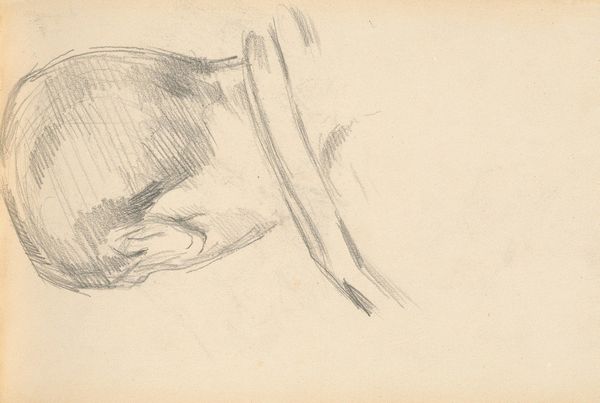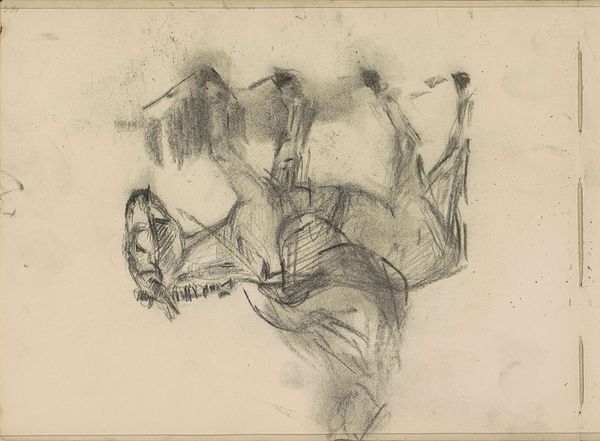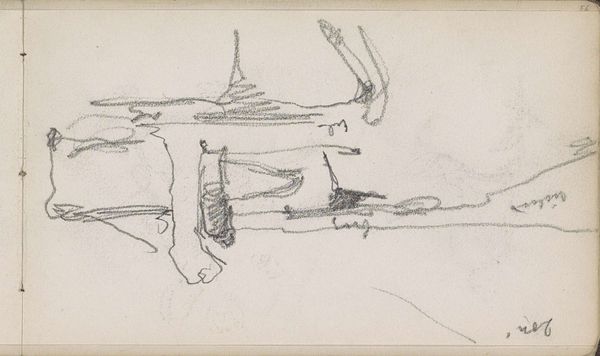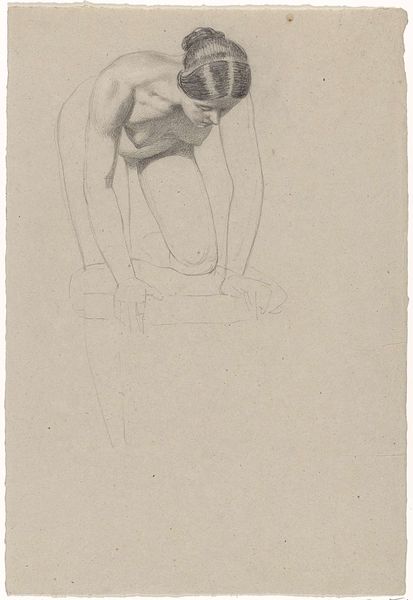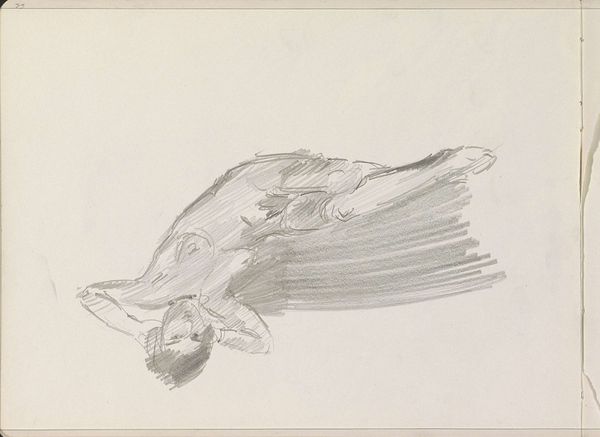
drawing, pencil
#
drawing
#
pencil sketch
#
landscape
#
pencil
#
realism
Copyright: Rijks Museum: Open Domain
Curator: This is a pencil sketch by Anton Mauve, titled "Boer met een zeis en pik om rogge te maaien," or "Farmer with a scythe and pitchfork harvesting rye" in English, created around 1886-1888. It resides here at the Rijksmuseum. Editor: It strikes me as almost bleak, in its starkness. The hunched figure, the simple tools...there’s a real weightiness to it despite being "just" a pencil drawing. Curator: It is tempting to regard Mauve's process when thinking about this artwork, which exemplifies a fascination with rural labor of the period. Considering the sketch's materiality and its function in Mauve's practice, what do you make of the subject of farm work in a pencil drawing? Editor: Mauve presents rural labor but seems to strip away any romanticism. He highlights a body, bent and weary, suggesting the demands and constraints on individuals within this societal structure. This is at the same time not just any body, but likely, a white farmer performing a very gendered and racialized activity of agriculture labor and food production. Curator: Indeed. Notice the economical use of line, the texture achieved through varied pressure, to convey not just the farmer's form, but also the materiality of the tools. A rough line here for the wooden shaft, a lighter, more suggestive one for the blade of the scythe. I find myself thinking about the labor not only represented, but enacted in its creation as well as thinking of those now erased farmers who lived within other, non-agrarian systems of labor. Editor: Exactly, it is a useful prompt in our larger inquiry into intersectionality. Looking closely, I wonder who this person was and the socio-economic environment of his time. I suppose the reality is that we are looking at labor itself through the lens of Mauve’s observations as a city painter. Curator: Right, which highlights the complicated and potentially contradictory layers of mediation present in the artistic practice. The urban artist selecting this imagery, the tools themselves reflecting centuries of craftsmanship, the grain feeding Dutch citizens through its exchange on international markets... Editor: A crucial reminder that no image, no matter how seemingly simple, exists in isolation. It speaks volumes, not just about artistry, but about the complex interplay of history, society, identity, and the political realities of a specific moment. Curator: It leaves one reflecting on not just the what, but the how and why.
Comments
No comments
Be the first to comment and join the conversation on the ultimate creative platform.
